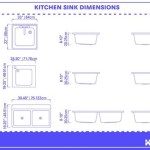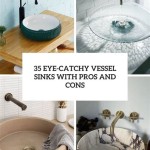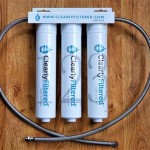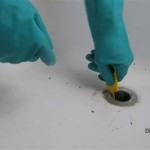The Best Way to Clean Sink Drains: A Comprehensive Guide
A clogged or slow-draining sink is a common household problem, often resulting from the accumulation of grease, hair, food particles, and soap scum within the drainpipes. Addressing this issue promptly and effectively is crucial not only for hygiene but also for preventing more serious plumbing complications that can be costly to repair. This article provides a comprehensive guide to the best methods for cleaning sink drains, ranging from simple preventative measures to more involved solutions for persistent blockages.
Prevention is Key: Minimizing Clog Formation
The most effective approach to maintaining a clear sink drain is to implement preventative measures. Consistent habits and responsible drain usage can significantly reduce the likelihood of clogs forming in the first place. Understanding the common causes of blockages and actively working to mitigate them will save time, effort, and potential repair expenses in the long run.
One of the primary culprits behind clogged sink drains is the disposal of fats, oils, and grease (FOG). These substances solidify as they cool, coating the inner walls of drainpipes and trapping other debris. Avoid pouring cooking oils, bacon grease, and other fatty liquids down the drain. Instead, collect them in a container and dispose of them properly in the trash. Similarly, scraping plates thoroughly before washing them minimizes the amount of food waste entering the drain. A simple rubber scraper effectively removes most food particles, preventing them from accumulating in the pipes.
Hair is another frequent offender, particularly in bathroom sinks. Hair strands tend to intertwine and cling to pipe walls, eventually forming a dense, impenetrable mass. Installing a drain strainer or screen is a simple and inexpensive way to capture hair before it enters the drain. These strainers are readily available at most hardware stores and are easily cleaned by removing the collected hair and debris. Regularly cleaning the strainer is essential to maintain its effectiveness.
Finally, consider the type of soap used. Some bar soaps contain ingredients that can react with minerals in the water to form a sticky residue that contributes to clogs. Switching to liquid soap or using a soap scum remover periodically can help prevent this buildup. Regularly flushing the drain with hot water after each use can also help to dissolve any remaining soap residue and prevent it from solidifying.
Simple Solutions: Addressing Minor Clogs
Even with diligent preventative measures, minor clogs can still occur. Fortunately, many of these blockages can be resolved using readily available household items and simple techniques. These methods are generally safe for pipes and are a good starting point before resorting to more aggressive solutions.
The first line of defense against a slow-draining sink is often hot water. Pouring a kettle or pot of boiling water down the drain can help to dissolve grease and loosen other debris that may be causing a partial blockage. Exercise caution when using this method, especially with PVC pipes, as extremely hot water can potentially soften or warp the plastic. It's best to use hot tap water rather than directly boiling water for PVC pipes. For metal pipes, boiling water is usually safe. Run the hot water for several minutes to allow it to work its way through the drain system. Repeat the process if necessary.
Baking soda and vinegar is a classic, environmentally friendly drain cleaning combination. The chemical reaction between these two substances creates a fizzing action that can dislodge debris and break down clogs. To use this method, pour one cup of baking soda down the drain, followed by one cup of white vinegar. Allow the mixture to fizz for approximately 30 minutes, then flush the drain with hot water. The baking soda and vinegar will help to deodorize the drain as well. This method is particularly effective for addressing grease buildup and minor food particle blockages.
A plunger is a simple yet effective tool for clearing many types of sink clogs. Ensure there is enough water in the sink to cover the cup of the plunger. Create a tight seal around the drain opening with the plunger and then pump vigorously up and down for several minutes. The pressure created by the plunging action can dislodge the clog and allow the water to drain freely. If the sink has an overflow drain, it should be blocked with a damp cloth to ensure that the plunging action is concentrated on the main drain. It may be necessary to repeat the plunging process several times to completely clear the clog.
Advanced Techniques: Tackling Stubborn Blockages
When simple solutions prove ineffective, more advanced techniques may be required to address persistent or severe clogs. These methods often involve disassembly of drain components or the use of specialized tools. Proceed with caution and consult a professional plumber if you are unsure about any aspect of these procedures.
Removing and cleaning the P-trap is a common and often successful approach to clearing stubborn sink clogs. The P-trap is the U-shaped pipe located under the sink. Its purpose is to trap debris and prevent sewer gases from entering the home. Over time, the P-trap can become clogged with accumulated debris. To remove the P-trap, place a bucket underneath to catch any water or debris that spills out. Loosen the slip nuts that connect the P-trap to the drainpipes using channel-lock pliers. Carefully remove the P-trap and clean out any accumulated debris. A bent piece of wire or a small brush can be helpful for removing stubborn blockages. Rinse the P-trap thoroughly and then reassemble it, ensuring that the slip nuts are tightened securely but not overtightened. Run water into the sink to check for leaks.
A drain snake, also known as a plumbing snake, is a flexible tool used to reach deep into drainpipes and break up or retrieve clogs. Drain snakes are available in various lengths and diameters, and can be purchased at most hardware stores. To use a drain snake, insert the end of the snake into the drain opening and carefully feed it down the pipe, rotating the handle to help it navigate bends. When you encounter resistance, indicating a clog, continue to rotate the handle to break up the clog or hook onto it. Slowly retract the drain snake, removing any debris that is attached. Repeat the process until the drain flows freely. Exercise caution with older or fragile pipes to avoid damaging them with the drain snake.
Chemical drain cleaners should be used as a last resort, as they can be harsh on pipes and potentially harmful to the environment and human health. Chemical drain cleaners typically contain strong acids or alkalis that dissolve organic matter. While they can be effective at clearing some clogs, they can also corrode pipes, particularly older metal pipes. Furthermore, the fumes from chemical drain cleaners can be irritating to the skin, eyes, and respiratory system. If other methods have failed and you choose to use a chemical drain cleaner, follow the manufacturer's instructions carefully and wear appropriate protective gear, such as gloves and eye protection. Avoid mixing different types of chemical drain cleaners, as this can create dangerous fumes.
Finally, consider hydro jetting as an option. Hydro jetting is a professional drain cleaning service that uses high-pressure water to scour the inside of pipes and remove even the most stubborn blockages. This method is particularly effective for removing grease buildup, tree roots, and other debris that cannot be dislodged by other methods. Hydro jetting is typically performed by a licensed plumber and is more expensive than other drain cleaning methods. However, it can be a worthwhile investment for homeowners who frequently experience drain clogs or have older plumbing systems.
Regularly cleaning sink drains and implementing preventative measures can significantly reduce the likelihood of clogs and maintain a healthy plumbing system.

How To Unclog Clean A Bathroom Sink Drain 3 Methods

How To Clean Bathroom Drains Unclog Your Shower And Sink

How To Unclog A Sink The Right Way

How To Unclog Clean A Bathroom Sink Drain 3 Methods

How Often Should I Clean My Drains At Home

How To Unclog A Sink The Experts Simple Steps Drain

How To Clean Your Kitchen Sink Drain Effective Tips And Methods

How To Clean A Clogged Sink Remove Stopper

10 Best Ways To Clean Sink Drains Naturally Fix Smelly Drain

How To Clean Drains Prevent Clogs Expert Tips Tricks







